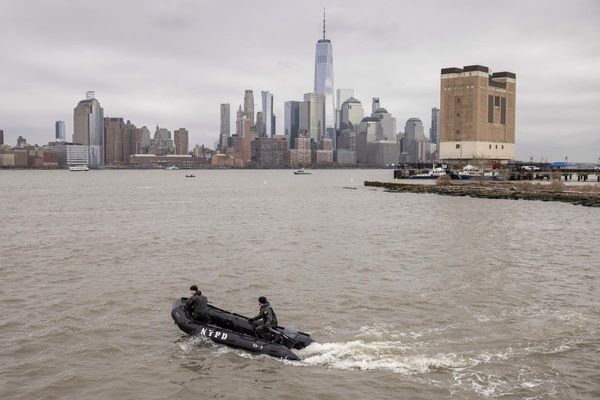
Far north Queenslanders faced damaging winds and life-threatening flooding after Tropical Cyclone Jasper made landfall and moved inland.
Minor flood warnings were issued for the Daintree, Tully, and Mulgrave rivers on Wednesday but the Bureau of Meteorology downgraded the storm to a tropical low.
“We could see major flooding in the Daintree later tonight and into tomorrow,” said the bureau’s Dean Narramore.
A watch-and-act warning urged residents in Douglas Shire, Hope Vale Aboriginal Shire, Wujal Wujal Aboriginal Shire, Mareeba Shire and parts of Cook Shire to remain indoors.
A deluge of 500mm in 24 hours was expected to develop along the coast and adjacent ranges between Cape Tribulation to Cairns, with up to 300mm of that falling in a six-hour peak.
🌀 Tropical Cyclone Jasper, category 2, is producing damaging to destructive wind gusts on the Far North Queensland coast as it slowly makes landfall in the vicinity of Wujal Wujal, just north of Cape Tribulation. #CycloneJasperhttps://t.co/CinugnxqkN pic.twitter.com/JiIU4g0brN
— Bureau of Meteorology, Queensland (@BOM_Qld) December 13, 2023
The system had already delivered more than 100mm of rainfall to several locations on Wednesday. From 9am to 9pm, the area south of the Daintree received 133mm, while just north of Cairns was hit with 145mm.
Cairns saw wind gusts of up to 80kmh on Wednesday evening, and 140kmh gusts were expected near Wujul Wujul and Port Douglas, which bore the brunt of the southern eyewall of the-then category 2 cyclone.

About 36,000 homes and businesses in far north Queensland faced power outages on Wednesday evening after strong winds cuased trees to knock out power lines.
A spokesperson from Ergon Energy Network said its crews had been told to take cover and wait until it was safe enough to assess the damage.
Residents in Cairns, Innisfail, and Wujal Wujal were told to remain inside on Wednesday and not to venture out. Meanwhile, a number of people had fled to evacuation centres in Cairns, Port Douglas and Cooktown.
Natascha McCorkell, who lives in Cairns, said she was waiting out the cyclone with her family at her home. She had a generator prepped in case she joined the thousands facing power outages.
Also the owner of a cafe near the shore in Cairns, McCorkell said she spent Tuesday placing 60 sandbags around her business in the hope it would protect it from storm surges.
Despite the severe warnings, she was optimistic because of how much work had been done by businesses and homes to prepare for the worst.
“I don’t think anything else can be done now, we just need to wait and see,” she said.

Sarah Scully, a senior meteorologist at the bureau, said the cyclone would weaken as it moved inland but there was a risk it redeveloped into a tropical cyclone once it hit warm waters in the Gulf of Carpentaria.
“There’s a lot of uncertainty and it’s highly dependent on how long that tropical low remains over those warm gulf waters,” she said.
About 450 Energy Queensland staff were on standby at Rockhampton and Townsville and more than 100 emergency personnel have been deployed out of Brisbane to boost local crews.
The Australian Defence Force was also poised to assist.
“We stand ready to support far north Queensland, the Queensland government and local governments in any way needed in the days ahead,” said federal emergency management minister, Murray Watt.
- Additional reporting by Australian Associated Press







